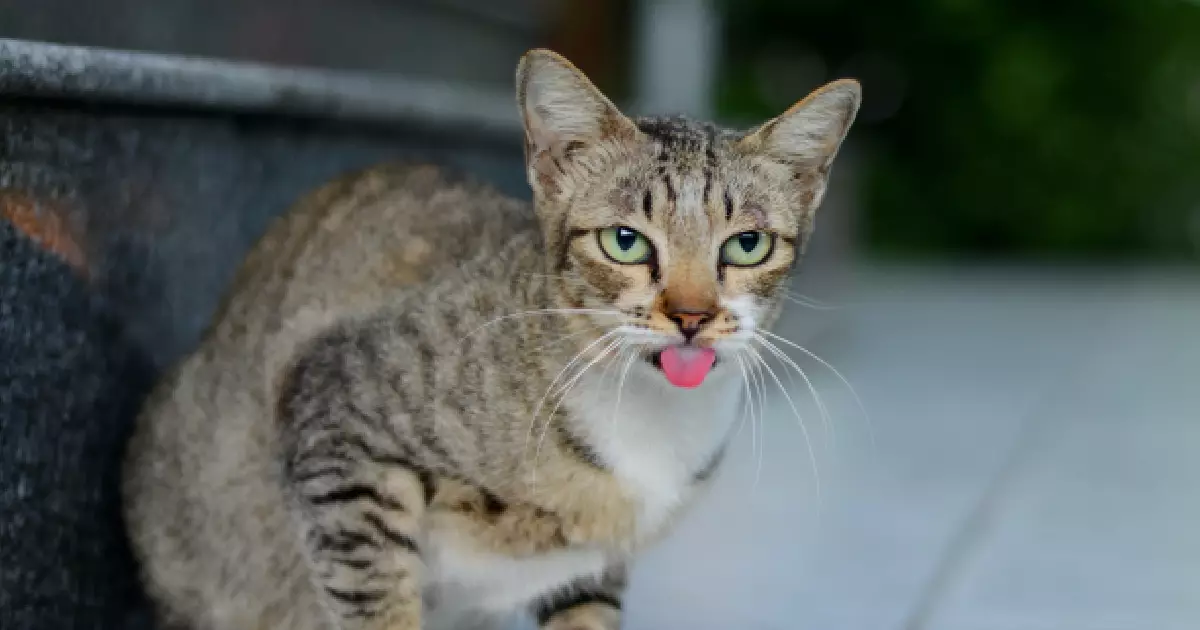When we think about our feline friends, the whimsical imagery of kittens with their tongues poking out often comes to mind. This endearing sight, known as the “blep,” certainly captures the hearts of many. However, there’s certainly more beneath the surface of this furry facade. As one cat owner, who goes by the delightful moniker of Forrest Wisewhiskers, recently provided a humorous insight into an everyday dilemma – the curious habit of cats munching on the hair of their human companions. While this may appear to be a case of mischievous impulse, it brings to light the fascinating structure and functionality of a cat’s tongue, specifically the unique papillae that adorn it.
Let’s delve into the remarkable design of the feline tongue, which makes it not just cute, but an instrument of various essential functions. The cat tongue, equipped with backward-facing barbs called papillae, is a curious creation of nature that serves not just aesthetic charm but essential biological purposes.
Papillae are tiny, hook-like projections that cover the surface of a cat’s tongue, each measuring around 2 millimeters in length and made of the resilient protein keratin, the same component found in claws and whiskers. The unique orientation of these barbs not only enhances the efficiency of grooming but also transforms the tongue into a versatile tool in the feline arsenal.
When a cat licks itself, the papillae function like a comb, effectively removing dirt, dander, and loose fur. This self-grooming behavior is not merely cosmetic but integral to a cat’s health, as it helps in the distribution of saliva, keeping their coat hydrated and effective at regulating body temperature. Interestingly, these structures also aid in food consumption; they allow a cat to scoop up small morsels, ensuring that no tiny treat goes uneaten.
But, the benefits of this remarkable structure extend beyond hygiene. The backward-facing nature of the papillae means that they can act as a tool for hydration when cats are thirsty, allowing them to lap water efficiently. It’s a beautiful, complex system that caters to various physiological needs that a cat faces daily.
Despite these impressive functions, the very nature of papillae can pose dangers, particularly when cats encounter string-like objects, such as hair or yarn. Their tongues can easily become ensnared in these items due to the gripping nature of the barbed structures. This can lead to serious health complications, including a condition known as “linear foreign body,” where the ingested material gets stuck in the gastrointestinal tract. Such emergencies can escalate quickly, leading to intense discomfort and necessitating urgent veterinary intervention.
This explanation, while somewhat alarming, underscores an important takeaway. Pet owners must remain vigilant about the environments in which their cats roam. Loose threads, bits of yarn, or human hair should be cleared away to avoid creating potential hazards.
The charming antics of our furry friends may leave us chuckling, but it’s essential to understand the science and biology behind their behaviors. While it is humorous to imagine a cat getting into trouble with a strand of hair, it’s imperative to consider their wellbeing. Educating ourselves about feline anatomy can create a more harmonious living environment for both pets and their humans.
As we immerse ourselves further into the lives of our pets, let us celebrate the remarkable features that make them unique. The papillae of a cat’s tongue is an elegant example of evolutionary design that has numerous functions — from grooming to eating, with a touch of danger that keeps both them and us on our toes. As with many aspects of caregiving, knowledge empowers responsible pet ownership. So, as you chuckle at your cat’s antics, take a moment to appreciate the extraordinary physiological abilities that come with being adorably feline. After all, every whim and quirk tells a story — and in this case, it’s one of beauty, function, and occasional mischief.

